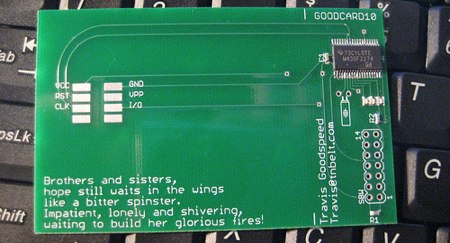
[Pattie Maes] from MIT’s Media Lab showed a really interesting augmented reality demo at TED this year. It’s a wearable projector that lets you interact with any surface. A camera tracks the gestures your fingertips make and performs related actions. She shows several uses: projecting a dial pad on your hand, displaying additional info on a product you’re holding, and taking a picture when you form a frame with your hands. The current equipment cost is $350, but that would be reduced in a dedicated device.
[via Waxy]















